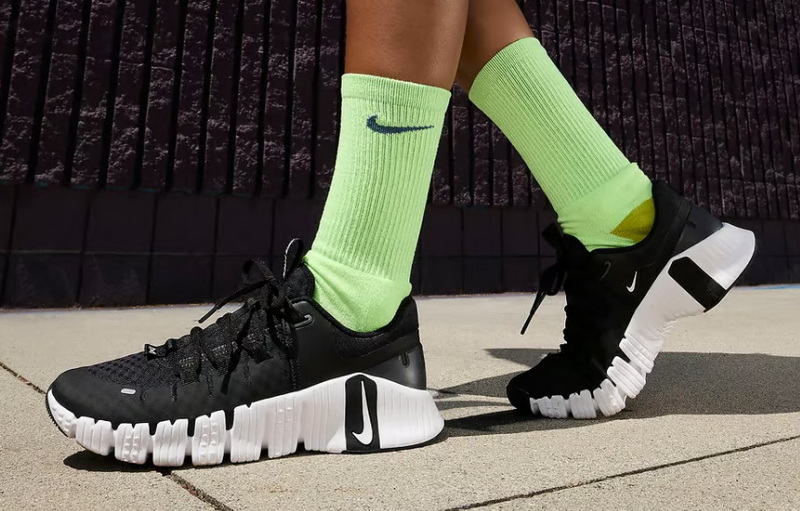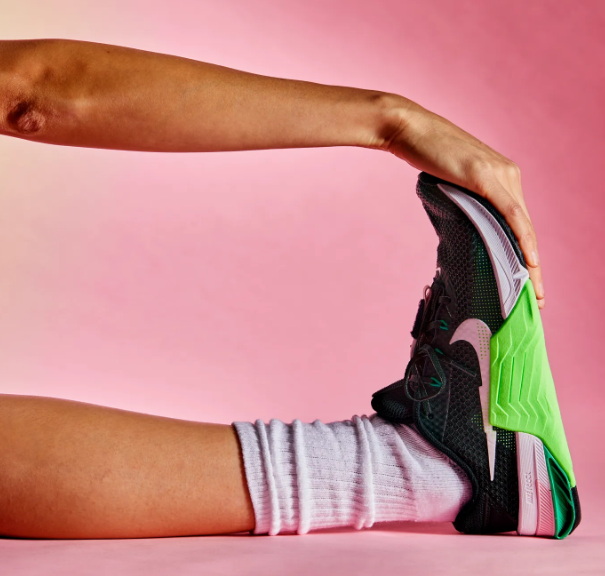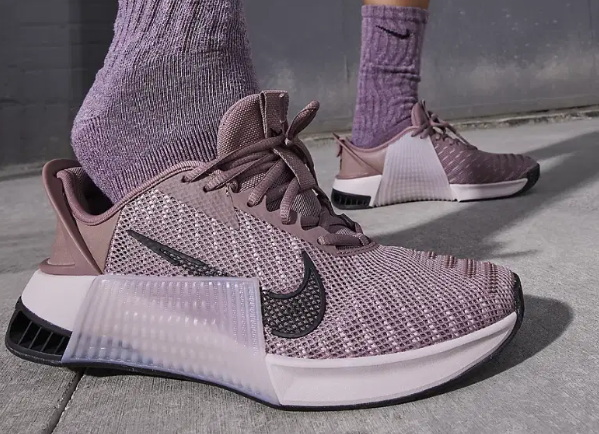Content Menu
● Why Choosing the Right Walking Shoes Matters
● Factors to Consider When Choosing Walking Shoes
● Top Recommendations for Women's Walking Shoes
>> 1. Brooks Ghost 16
>> 2. Hoka Transport
>> 3. Nike Motiva
>> 4. Skechers Arch Fit 2.0
>> 5. On Cloud 5
● Best Lightweight Walking Shoes
● Best Budget-Friendly Options
● How to Properly Fit Walking Shoes
● Maintaining Your Walking Shoes
● Walking Techniques to Enhance Your Experience
● Choosing Walking Shoes Based on Activity Level
>> Casual Walks
>> Fitness Walking
>> Hiking
● The Importance of Trying Before Buying
● Conclusion
● FAQ
>> 1. What makes a good walking shoe?
>> 2. How often should I replace my walking shoes?
>> 3. Can I use running shoes for walking?
>> 4. What type of closure is best for women's walking shoes?
>> 5. How do I know if I need arch support?
Walking is one of the simplest yet most effective forms of exercise, and choosing the right shoes can significantly enhance your experience. The best walking shoes for women should provide comfort, support, and durability. This article will explore various options available in the market, highlighting key features and benefits of each shoe. Additionally, we will discuss factors to consider when selecting walking shoes and provide a comprehensive FAQ section at the end.

Why Choosing the Right Walking Shoes Matters
Selecting the right walking shoes is crucial for several reasons:
- Comfort: Proper footwear can prevent discomfort during long walks. Shoes that fit well and provide adequate cushioning help you avoid blisters and soreness.
- Support: Good walking shoes provide necessary arch and ankle support, reducing the risk of injuries. This is particularly important for those who walk frequently or for extended periods.
- Durability: Quality shoes can withstand regular use without wearing out quickly. Investing in a durable pair means you won't have to replace them as often.
- Performance: The right shoes can improve your walking efficiency and overall experience. They can help you maintain a good posture and reduce fatigue.
Factors to Consider When Choosing Walking Shoes
When selecting walking shoes, consider the following aspects:
- Fit: Ensure there is enough room in the toe box and that the heel fits snugly. A proper fit allows for natural foot movement without pinching or sliding.
- Cushioning: Look for shoes with adequate cushioning to absorb impact. This is especially important if you plan to walk on hard surfaces like concrete.
- Arch Support: Identify your arch type (high, medium, or low) and choose accordingly. Some brands offer specific models designed for different arch types.
- Weight: Lighter shoes can enhance speed and comfort during walks. However, make sure they still provide enough support and cushioning.
- Breathability: Shoes made from breathable materials help keep your feet cool, especially during warm weather or longer walks.
Top Recommendations for Women's Walking Shoes
Here are some of the best walking shoes for women based on extensive testing and user feedback:
1. Brooks Ghost 16
The Brooks Ghost 16 is a versatile shoe known for its exceptional cushioning and support. It features a breathable mesh upper that allows air circulation while keeping your feet dry. The soft midsole provides comfort even after long hours of wear, making it an ideal choice for both casual walkers and those who enjoy brisk walking sessions.
2. Hoka Transport
Renowned for its plush cushioning, the Hoka Transport offers stability and comfort. Its wide base helps distribute weight evenly, making it ideal for long walks or standing all day. The shoe's lightweight design ensures that you won't feel weighed down during your activities.
3. Nike Motiva
The Nike Motiva stands out with its smooth transitions and plush sensation. It features a rocker sole design that encourages natural movement, making it perfect for daily errands or leisurely strolls in the park. The stylish design also makes it suitable for casual outings beyond just walking.
4. Skechers Arch Fit 2.0
Designed specifically for arch support, the Skechers Arch Fit 2.0 is perfect for those with foot conditions like overpronation. It offers a cushioned base that reduces strain on the feet while providing excellent stability during walks. The shoe's stylish appearance makes it a great option for everyday wear as well.
5. On Cloud 5
The On Cloud 5 is lightweight and flexible, making it an excellent choice for travel or casual walks. It provides a cloud-like feel underfoot, enhancing comfort during extended wear. The unique sole design promotes natural foot movement while providing sufficient cushioning.

Best Lightweight Walking Shoes
For those seeking lightweight options that don't compromise on comfort:
- Adidas Ultraboost Light: Known for its spacious upper and supportive midsole, this shoe combines style with performance, making it suitable for both athletic activities and casual outings.
- Ryka Devotion Plus 3: Offers great cushioning designed specifically for women's feet, ensuring a comfortable fit while maintaining a lightweight feel throughout your walk.
Best Budget-Friendly Options
If you're looking for quality without breaking the bank:
- Under Armour UA Essential Sportstyle Shoe: Provides excellent cushioning at an affordable price point without sacrificing style or performance.
- Skechers GO WALK Joy: A budget-friendly choice that offers all-day comfort with its lightweight construction and responsive cushioning system.
How to Properly Fit Walking Shoes
To ensure you select the right size:
1. Measure both feet at the end of the day when they are most swollen.
2. Try on shoes with the socks you intend to wear while walking.
3. Walk around in the shoes to check for comfort and fit.
4. Ensure there's about a thumb's width of space between your longest toe and the front of the shoe.
5. Pay attention to how your heel fits; it should not slip out when you walk.
Maintaining Your Walking Shoes
To prolong the life of your walking shoes:
- Clean them regularly to remove dirt and debris using a damp cloth or brush.
- Store them in a cool, dry place away from direct sunlight to prevent material degradation.
- Replace them when you notice significant wear or loss of cushioning; typically every 300–500 miles depending on usage frequency.
Walking Techniques to Enhance Your Experience
In addition to having the right footwear, employing proper walking techniques can further enhance your experience:
1. Posture: Maintain an upright posture with shoulders back and relaxed while engaging your core muscles.
2. Stride: Aim for shorter strides rather than long ones to maintain balance and reduce impact on joints.
3. Foot Placement: Land softly on your heel before rolling through your foot to push off from your toes.
4. Breathing: Establish a rhythmic breathing pattern that matches your pace; inhale through your nose and exhale through your mouth.
5. Hydration: Stay hydrated before, during, and after walks to maintain energy levels.
Choosing Walking Shoes Based on Activity Level
Different activities may require different types of walking shoes:
Casual Walks
For leisurely strolls around town or parks, prioritize comfort over technical features:
- Look for cushioned options like Skechers GO WALK Joy or On Cloud 5.
Fitness Walking
If you're engaging in fitness walking or power walking:
- Choose supportive models like Brooks Ghost 16 or Hoka Transport that offer stability and shock absorption.
Hiking
For hiking on trails:
- Consider specialized hiking shoes or trail runners that provide grip and protection against rough terrain while ensuring breathability.
The Importance of Trying Before Buying
Whenever possible, try on multiple pairs of shoes before making a decision:
- Walk around in them within the store; many retailers have return policies allowing you to test them out at home.
- Don't hesitate to ask store associates about specific features related to foot health; they can provide valuable insights based on their expertise.
Conclusion
Choosing the right walking shoes can greatly enhance your comfort and performance while walking. With options ranging from supportive models like Brooks Ghost 16 to lightweight choices like On Cloud 5, there is something suitable for everyone's needs. Remember to consider fit, support, durability, and activity level when making your selection—your feet will thank you!

FAQ
1. What makes a good walking shoe?
A good walking shoe should provide flexibility, cushioning, support, and durability while ensuring a comfortable fit without pressure points.
2. How often should I replace my walking shoes?
Walking shoes generally last between 350 to 500 miles or about 6–8 months before they need replacement due to wear.
3. Can I use running shoes for walking?
Yes! Many running shoes share similar qualities with walking shoes and can be used effectively for walking.
4. What type of closure is best for women's walking shoes?
Both slip-on and lace-up styles have their benefits; slip-ons are easy to wear while lace-ups offer a more secure fit.
5. How do I know if I need arch support?
If you experience foot pain or discomfort while walking or standing—especially in the arches or heels—you may benefit from additional arch support.

















